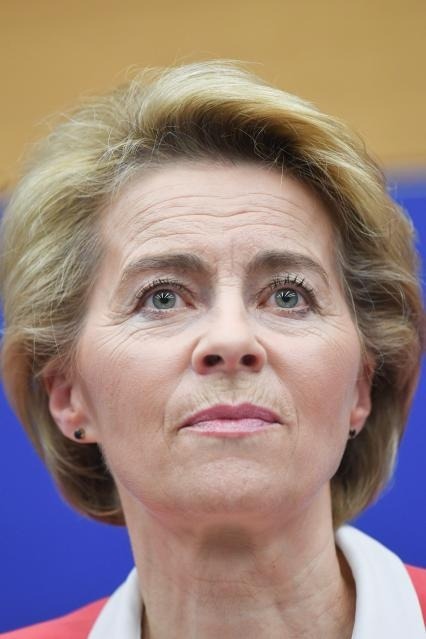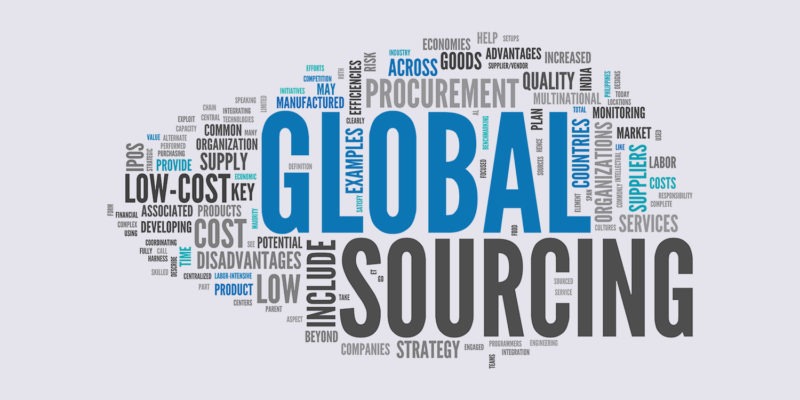Manufacturing and Supply: The Impact Factors for 2023
What are key issues impacting bio/pharma manufacturing and supply in 2023? DCAT Value Chain Insights takes an inside look at what is on the industry’s radar.
Inflation easing but remains high
Inflation was the number one issue on a macroeconomic level in 2022, and it played heavily into manufacturing and supply lines in the bio/pharmaceutical industry in the form of higher raw materials, production, and transportation costs. As the global economy emerged from the pandemic, markets responded to increased demand, and with that came supply challenges to meet that demand on a production, transportation, and overall supply-chain level, which contributed to rising costs. That situation, later combined with the volatility in energy markets, particularly in Europe, stemming from the war in Ukraine and the European Union’s (EU) policy moves and actions to decrease its reliance on the supply of natural gas from Russia, resulted in shifts in supply-demand fundamentals for energy. This not only affected production and transportation costs, but the chemicals manufacturing value chain, in the form of higher feedstock costs and the resulting negative impact on commodity and downstream chemicals.
So what is expected in 2023? Although the rate of inflation eased in the later part of 2022, it still remains high relative to historical levels, but there are signs that it will further ease in 2023. On a global basis, year-on-year inflation in the countries in the Organization for Economic Co-operation and Development (OECD), composed of 38 member countries, including the leading advanced economies, saw a slight decline in inflation. As measured by the Consumer Price Index (CPI), the inflation rate fell to 10.3% in November 2022, back to the level recorded in August, from 10.7% in October 2022. Declines in inflation between October and November were recorded in 25 of the 38 OECD countries.
Energy prices, a major contributor to overall inflation, also eased somewhat in the later part of 2022 although they still remain high. The energy inflation rate in the OECD fell to 23.9% in November 2022, from 28.1% in October 2022, to reach its lowest rate since September 2021. Nevertheless, it remained above 10% in 34 of the 38 OECD countries and above 30% in 14 of them.
Overall, year-on-year inflation in the G7 countries (Canada, France, Germany, Italy, Japan, the UK. and the US) fell to 7.4% in November 2022, from 7.8% in October 2022. Among G7 countries, inflation declined in Germany, the UK and the US and showed only small changes in the other countries, according to data from the OECD.
In the euro area, year-on-year inflation as measured by the Harmonized Index of Consumer Prices (HICP), fell to 10.1% in November 2022, from 10.6% in October 2022, as energy inflation fell sharply. This was the first decrease in year-on-year HICP inflation since June 2021. Eurostat’s flash estimate for the euro area in December 2022 points to a further decrease in year-on-year inflation, to 9.2%, with energy inflation falling to 25.7% from 34.9% in November 2022, but inflation, excluding food and energy, increasing to 5.2% from 5.0%, according to information from the OECD.
In the G20, year-on-year inflation fell to 9.0% in November 2022, from 9.5% in October 2022. The G-20 consists of 19 countries (Argentina, Australia, Brazil, Canada, China, France, Germany, India, Indonesia, Italy, Japan, Republic of Korea, Mexico, Russia, Saudi Arabia, South Africa, Turkey, the UK, and US) and the European Union. The G20 member countries account for approximately 85% of global gross domestic product and over 75% of global trade, and about two-thirds of the world population. Outside the OECD, year-on-year inflation decreased in Brazil, China, India, Indonesia, Saudi Arabia and South Africa, and only increased in Argentina.
Energy outlook for 2023
For the bio/pharmaceutical industry, rising energy costs affect not only the costs for energy consumed for heat, power, and electricity generation to run operations and transport products and materials, but also impact the costs of raw materials, intermediates, and other materials used to make active pharmaceutical ingredients (APIs) and ultimately the final drug product. Energy, when used as a feedstock, is an important determinant of cost in producing the chemicals used in API production, whether raw materials, solvents, reagents, intermediates, and other chemical inputs. When energy costs rise, it places pricing pressure on chemical inputs as well as on costs for overall energy consumption.
So what is the outlook for energy markets and pricing in 2023? Global consumption of liquid fuels such as gasoline, diesel, and jet fuel, are to set new record highs in 2024, according to the US Energy Information Administration (EIA), a US government agency. Global liquid fuel consumption will exceed 100 million barrels per day, on average, in 2023 for the first time since 2019, then average more than 102 million barrels per day in 2024.
EIA expects crude oil prices to decrease through 2023 and 2024, even as petroleum consumption increases, largely because growth in crude oil production in the US and abroad will continue to increase over the next two years. EIA forecasts that the European benchmark Brent crude oil price will average less than $80 per barrel in 2024, more than 20% lower than in 2022. EIA forecasts that the Brent crude oil price will average $83 per barrel in 2023, down 18% from 2022, and continue to fall to $78/barrel in 2024 as global oil inventories build, putting downward pressure on crude oil prices.
“Our forecast for global consumption of petroleum depends on uncertain economic conditions—especially in China,” said EIA Administrator Joe DeCarolis, in commenting on the short-term energy outlook. “How China’s economy changes following its reopening from pandemic lockdowns could have a significant impact on global consumption of petroleum products.”

President
European Commission
Another key variable is the energy outlook in Europe, which experienced rising energy costs in 2022 due to the impact of the war in Ukraine, which resulted in a reduction in natural gas supply from Russia and the need for the EU to reduce its reliance of the supply of natural gas from Russia and shift to other energy sources. Speaking at a press conference last month (December 2022) about the outlook on the EU gas supply in 2023, the President of the European Commission, Ursula von der Leyen, gave an overview of EU actions to address the energy crisis so far and the planned strands of work in 2023.
She stressed that the EU has acted successfully in withstanding Russian energy blackmail, including by putting in place REPowerEU, a strategic plan to reduce EU’s dependency on Russia’s fossil fuels. She outlined 10 key actions the EU has done in the past 10 months to address the EU’s energy situation.
These actions include:
- Diversifying away from Russian fossil fuels towards other reliable suppliers;
- Saving energy by reducing the gas demand by 15%;
- Boosting the roll-out of renewables;
- Speeding up the permitting process for renewables;
- Putting in place a minimum gas storage obligation;
- Ensuring solidarity via default arrangements for the supply of gas between EU member states where solidarity agreements are not yet in place;
- Setting up a platform for the joint purchasing of gas to increase EU’s negotiation leverage;
- Improving the EU’s energy infrastructure;
- Introducing a legal framework that enables EU member states to skim off the windfall profits of energy-producing companies;
- Proposing a market correction mechanism, also known as the price cap, to limit spikes in gas prices at the title transfer facility level.
“The result of all these actions is that we are safe for this winter,” said von der Leyen, in her press conference on December 12, 2022. “…[h]owever, some of our proposals are still under discussion, and they are essential for our energy preparedness.” She stressed and called on the Council of the European Union to adopt the measures to begin preparing for the next winter of 2023-2024.
Looking ahead, she outlined a number of key priorities, the first one being securing enough liquified natural gas (LNG) supply. “This year, we had up to 130 billion cubic meters of LNG,” she said. “For this, we of course have to further intensify our outreach to our international partners.”.
Von der Leyen also pointed to the importance of making “joint purchasing a reality” and scaling up and accelerating the deployment of renewables. She said that in 2022, there were record additions of wind and solar capacity in the EU, and that it was expected that renewable capacity will rise even further in 2023, replacing around 12 billion cubic meters of gas.
Elsewhere, in the US, there are positive signs that the rate of energy inflation is decreasing. US gasoline prices are largely tied to crude oil, and the EIA expects significant price decreases in gasoline compared with 2022. EIA forecasts US gasoline prices to average around $3.30 per gallon in 2023 and $3.10 per gallon in 2024.
“Lower crude oil prices are one reason we expect lower gasoline prices, but we also expect that reduced refinery margins will contribute to gasoline prices coming down from 2022 highs,” EIA’s DeCarolis said.
Diesel fuel prices, a key energy source in transportation, are also expected to fall in 2023. The EIA projects that retail diesel prices in the US to average about $4.20/gallon in 2023, down 16% from 2022. In 2024, it expects prices to continue to fall, and average near $3.70/gal.
For natural gas in the US, the EIA expects US natural gas prices to decrease, on average, through 2023 and 2024 as US domestic production continues to grow. EIA also expects additional growth in US LNG exports as global demand remains strong and more US LNG export facilities come on line.
“The natural gas market is particularly uncertain, but we expect that US natural gas production will establish new record highs in both 2023 and 2024, leading to lower domestic prices,” EIA’s DeCarolis said.
DCAT Week programs provide executive insights on the path forward
How the bio/pharma industry is dealing with this recent market volatility (inflationary pressures, supply-chain disruptions, and geopolitical uncertainty) and what the path forward is in managing supply lines will be addressed at several programs at DCAT Week, the flagship event of the Drug, Chemical & Associated Technologies Association (DCAT), which is being held March 20-23, 2023 in New York. DCAT is bringing in high-level executives to delve deeper and provide practical insights in how to best address these issues now and in the near term through several programs at DCAT Week,
In one program, Executive Insights: Weathering the Storm – The Path Forward in Optimizing Supply Practices, senior bio/pharma executives will provide insights on ways to optimize supply practices in light of the recent market volatility, including in managing the pharma customer–supplier interface—contracting, supplier selection and evaluation, and supplier risk assessment and mitigation.
Another program, The Disruption Busters: New Approaches in Supplier Risk Assessment & Mitigation, will examine how other industries (automotive, high tech) are addressing the supply challenges with new approaches/tools in supplier risk assessment and mitigation to build greater supply-chain resiliency.
A third program, Industry Radar 2023: Energy, Raw Materials & Sustainability, will provide an energy and chemicals outlook and further examine the pressure points in raw materials and downstream production in 2023. It will also look at another hot-button issue—sustainability—by providing insights from GlaxoSmithKline’s Chief Procurement Officer and how the company is working with suppliers to meet sustainability targets.
Further information, including how to register, may be found at the DCAT Week website and the individual program links outlined above.





